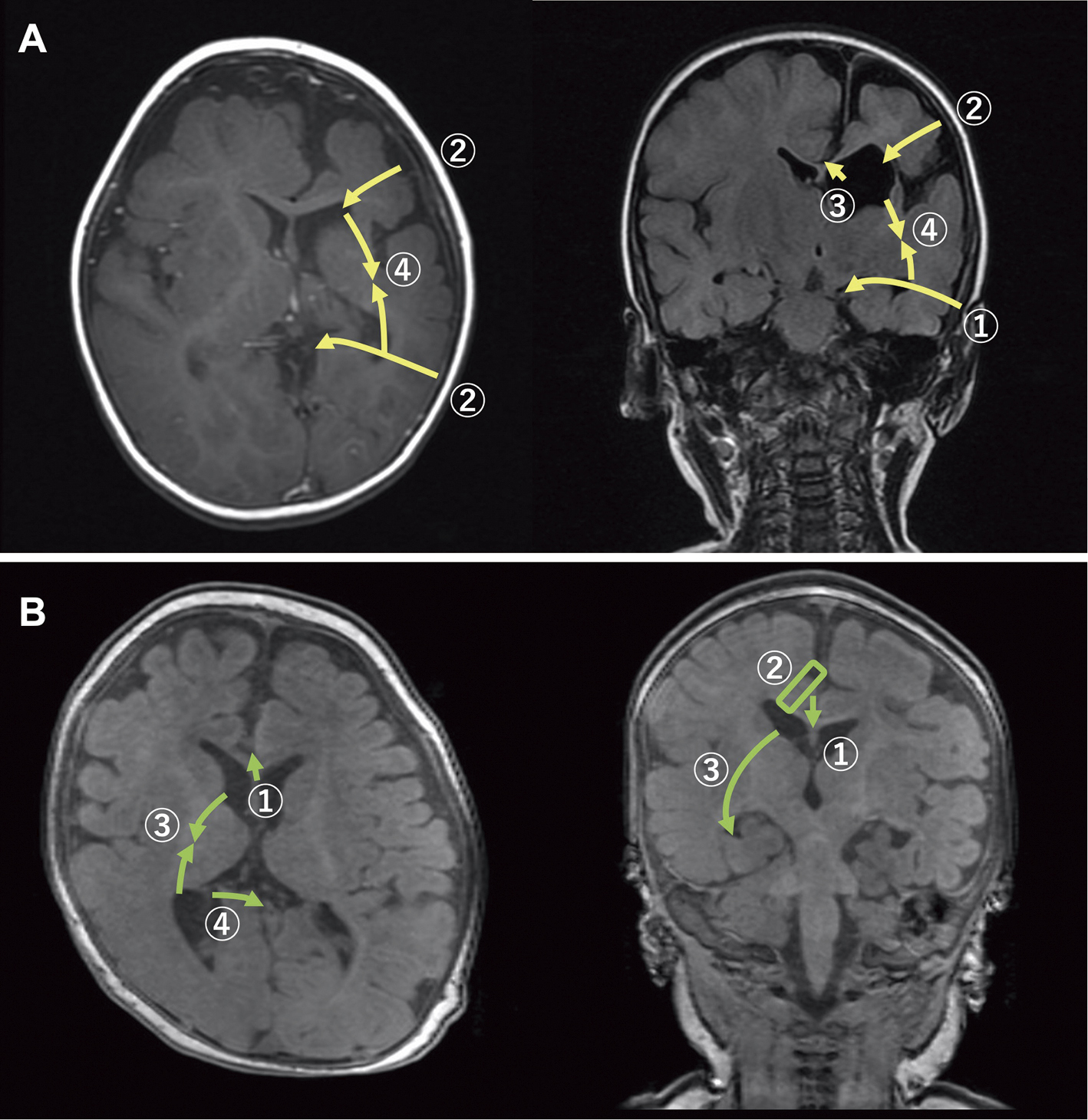2 0 0 0 OA Surgical Strategy for Hemispherotomy
- 著者
- Takeshi MATSUO So FUJIMOTO
- 出版者
- The Japan Neurosurgical Society
- 雑誌
- Neurologia medico-chirurgica (ISSN:04708105)
- 巻号頁・発行日
- pp.2022-0279, (Released:2023-01-20)
- 参考文献数
- 21
Hemispherotomy is a radical treatment for drug-resistant epilepsy that targets developmental, acquired, and progressive diseases with widespread epileptogenic regions in one cerebral hemisphere. Currently, two main approaches are utilized after repeated improvements: lateral and vertical approaches. With the lateral approach, the surgical field is wide, and the approach to the lateral ventricle is relatively easy. On the other hand, the vertical approach has the advantage of reducing intraoperative bleeding and operating time as the resection line of the radial fiber is short, and understanding the three-dimensional anatomy is relatively easy. The lateral approach is generally used for atrophic lesions, whereas the vertical approach is for hypertrophic lesions. Hemispherotomy is expected to not only suppress epileptic seizures but also improve psychomotor development by protecting the unaffected cerebral hemisphere. However, this method is one of the most invasive surgeries in epilepsy surgery, and it is important to fully consider its indications. Furthermore, understanding the neural fiber pathway is important for actual surgery.
